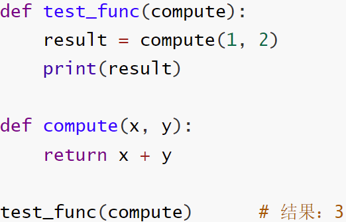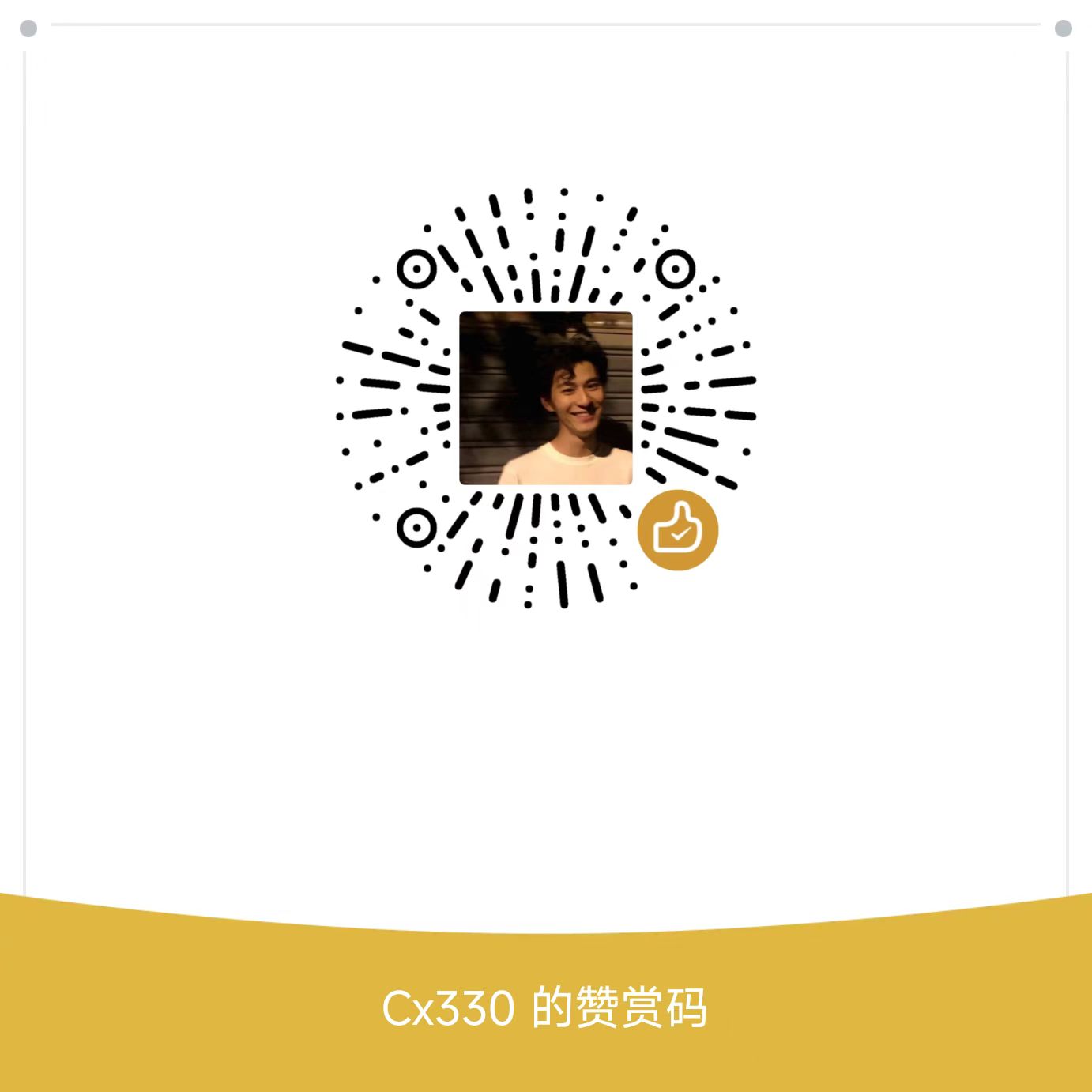Python 一、数据类型、运算符、字符串 string,int,float,+-,*,/,//(整除),%,**指数
1 2 3 4 5 6 7 print (type ('abc' ))int (x)float (x)str (x)print (10 **10 )name="888" print ("ABC" +name+"666" )
字符串格式化
1 2 3 4 5 6 name="luhao" print ("555%s" %name)location="HZ" print ("555%sin%s" %(name,location))staic= 7 print (f"666{name} {staic} " )
格式符号
转化
%s
将内容转换成字符串,放入占位位置
%d
将内容转换成整数,放入占位位置
%f
将内容转换成浮点型,放入占位位置
我们可以使用辅助符号”m.n”来控制数据的宽度和精度
• m,控制宽度,要求是数字(很少使用),设置的宽度小于数字自身,不生效
•.n,控制小数点精度,要求是数字,会进行小数的四舍五入
•%5d:表示将整数的宽度控制在5位,如数字11,被设置为5d,就会变成:空格空格空格11,用三个空格补足宽度。
•%5.2f:表示将宽度控制为5,将小数点精度设置为2
小数点和小数部分也算入宽度计算。如,对11.345设置了%7.2f 后,结果是:空格 空格11.35。2个空格补足宽度,小数部分限制2位精度后,四舍五入为 .35
•%.2f:表示不限制宽度,只设置小数点精度为2,如11.345设置%.2f后,结果是11.35
输入语句:
input()
二、判断、循环语句、函数 if..else
1 2 3 4 5 6 7 8 a=10.135 print ("555+%5.2f" %a)if a<10 : print (6 ) elif a>10 : print (3 ) else : print (2 )
while循环
for循环
1 2 3 4 5 6 7 8 9 10 11 money="itheima" for x in moneys: print (x) for x in range (1 ,10 ,1 ) print (x) for x in range (10 ) print (x) for x in range (1 ,10 ) print (x)
continue and break
函数
1 2 3 4 5 6 7 8 9 10 11 12 def countlen2 (data ): """ :param data: :return: """ global count count=0 for x in data: count+=1 return count len = countlen("ITHEIMA" )
如果有两个return 只用第一个
多个返回值
1 2 3 4 5 6 7 8 9 def count (date ): return 1 ,2 a=count(1 ) b=count(2 ) print (a)print (b)c,d=count(3 ) print (c)print (d)
位置传递
1 2 3 4 5 def count2 (*args ): for i in args: print (i) count2("6" ,"梁贺不行" ,7 )
关键字传递
1 2 3 4 5 6 def count3 (**kwargs ): keys=kwargs.keys() for i in keys: print (kwargs[i]) count3(name=1000 ,names=1000 ,name3=1000 )
注意:
参数是“键=值”形式的形式的情况下, 所有的“键=值”都会被kwargs接受, 同时会根据“键=值”组成字典.
三、数据容器 1.list 1 2 3 4 5 6 7 8 9 10 11 12 13 14 15 16 17 18 19 mylist=['1' , 2 , True ] mylist1=["1" , [2 ,1 ], True ] print (mylist[-1 ])print (mylist1[2 ][1 ])were=mylist.index("a" ) mylist.insert(1 ,"abc" ) mylist.append(777 ) mylist.extend(mylist1) del mylist[2 ]A=mylist.pop(0 ) mylist.remove("itheima" ) mylist.clear() mylist.count("itheima" ) lenss=len (mylist) for i in mylist:
2.元组 不可修改
编号 方法 作用
1
index()
查找某个数据,如果数据存在返回对应的下标,否则报错
2
count()
统计某个数据在当前元组出现的次数
3
len(元组)
统计元组内的元素个数
1 2 3 t1=tuple (1 ,"2" ,3 ) t2=(1 ,"3" ,2 )
3.字符串
编号 操作 说明
1
字符串[下标]
根据下标索引取出特定位置字符
2
字符串.index(字符串)
查找给定字符的第一个匹配项的下标
3
字符串.replace(字符串1, 字符串2)
将字符串内的全部字符串1,替换为字符串2 不会修改原字符串,而是得到一个新的
4
字符串.split(字符串)
按照给定字符串,对字符串进行分隔 不会修改原字符串,而是得到一个新的列表
5
字符串.strip() 字符串.strip(字符串)
移除首尾的空格和换行符或指定字符串
6
字符串.count(字符串)
统计字符串内某字符串的出现次数
7
len(字符串)
统计字符串的字符个数
1 2 3 4 5 6 7 8 9 10 11 12 13 mystr="ithrima" STR=mystr[2 ] mys=mystr.index("th" ) mystr.replace("yh" ,"66" ) mylitsbeh=mystr.split(" " ) mystr.count("it" ) len ("mystr" )
4.序列 序列的典型特征就是:有序 并可用下标索引,字符串、元组、列表均满足这个要求
切片
1 2 3 4 5 6 7 8 9 10 11 12 13 14 15 16 17 18 19 20 21 22 23 24 25 26 27 28 29 30 my_list = [1 , 2 , 3 , 4 , 5 ] new_list = my_list[1 :4 ] print (new_list) my_tuple = (1 , 2 , 3 , 4 , 5 ) new_tuple = my_tuple[:] print (new_tuple) my_list = [1 , 2 , 3 , 4 , 5 ] new_list = my_list[::2 ] print (new_list) my_str = "12345" new_str = my_str[:4 :2 ] print (new_str) my_str = "12345" new_str = my_str[::-1 ] print (new_str) my_list = [1 , 2 , 3 , 4 , 5 ] new_list = my_list[3 :1 :-1 ] print (new_list) my_tuple = (1 , 2 , 3 , 4 , 5 ) new_tuple = my_tuple[:1 :-2 ] print (new_tuple)
5.set •列表可修改、支持重复元素且有序
•元组、字符串不可修改、支持重复元素且有序
无序,不支持下标索引访问
1 2 3 4 5 6 7 8 9 10 11 12 13 14 my_set={"Hello" ,"world" } my_set.add("itheima" )/ my_set.remove("Hello" ) my_set.pop() my_set.clear() set1={1 ,23 ,4 } set2={1 ,4 ,9 } set1.diffenrence(set2) set1.difference_update(set2) set1.union(set2) len (set1)
编号 操作 说明
1
集合.add(元素)
集合内添加一个元素
2
集合.remove(元素)
移除集合内指定的元素
3
集合.pop()
从集合中随机取出一个元素
4
集合.clear()
将集合清空
5
集合1.difference(集合2)
得到一个新集合,内含2个集合的差集 原有的2个集合内容不变
6
集合1.difference_update(集合2)
在集合1中,删除集合2中存在的元素 集合1被修改,集合2不变
7
集合1.union(集合2)
得到1个新集合,内含2个集合的全部元素 原有的2个集合内容不变
8
len(集合)
得到一个整数,记录了集合的元素数量
6.字典 •Key不可重复,重复会对原有数据覆盖
1 2 print (stu_score["王力宏" ])print (stu_score["王力宏" ]['语文' ])
1 2 3 4 5 6 7 8 9 10 11 stu_score["卢浩" ]={"语文" :100 ,"数学" :100 ,"英语" :100 } stu_score["卢浩" ]={"语文" :1000 ,"数学" :1000 ,"英语" :1000 } stu_score.pop("卢浩" ) stu_score.clear() stu_score.keys()
编号 操作 说明
1
字典[Key]
获取指定Key对应的Value值
2
字典[Key] = Value
添加或更新键值对
3
字典.pop(Key)
取出Key对应的Value并在字典内删除此Key的键值对
4
字典.clear()
清空字典
5
字典.keys()
获取字典的全部Key,可用于for循环遍历字典
6
len(字典)
计算字典内的元素数量
四、文件操作、异常、模块
模式 描述
r
以只读方式打开文件。文件的指针将会放在文件的开头。这是默认模式。
w
打开一个文件只用于写入。如果该文件已存在则打开文件,并从开头开始编辑,原有内容会被删除。 如果该文件不存在,创建新文件。
a
打开一个文件用于追加。如果该文件已存在,新的内容将会被写入到已有内容之后。 如果该文件不存在,创建新文件进行写入。
操作
功能
文件对象 = open(file, mode, encoding)
打开文件获得文件对象
文件对象.read(num)
读取指定长度字节 不指定num读取文件全部
文件对象.readline()
读取一行
文件对象.readlines()
读取全部行,得到列表
for line in 文件对象
for循环文件行,一次循环得到一行数据
文件对象.close()
关闭文件对象
with open() as f
通过with open语法打开文件,可以自动关闭
1 2 3 4 5 6 7 8 9 10 11 12 13 14 15 16 17 18 19 20 21 with open ("python.txt" , "r" ) as f: f.readlines() f = open ('python.txt' , 'a' ) f.write('hello world' ) f.flush() f = open ('python.txt' , 'w' ) f.write('hello world' ) f.flush()
异常
1 2 3 4 5 6 7 8 9 10 11 12 13 14 15 16 17 18 19 20 21 22 23 24 25 26 27 28 29 30 31 32 33 34 try : f = open ('linux.txt' , 'r' ) except : f = open ('linux.txt' , 'w' ) try : print (name) except NameError as e: print ('name变量名称未定义错误' ) try : print (1 /0 ) except (NameError, ZeroDivisionError): print ('ZeroDivision错误...' ) try : print (num) except (NameError, ZeroDivisionError) as e: print (e) try : print (name) except Exception as e: print (e) try : f = open ('test.txt' , 'r' ) except Exception as e: f = open ('test.txt' , 'w' ) else : print ('没有异常,真开心' ) finally : f.close()
import 模块名
from 模块名 import 类、变量、方法等
from 模块名 import *
import 模块名 as 别名(别名.功能 )
from 模块名 import 功能名 as 别名(可直接调用别名 )
1 2 3 4 5 6 7 def test (a, b ): print (a + b) if __name__ == '__main__' : test (1 , 1 )
_ _all _ _=[‘text’] 外部只引入textA模块
_ _init _ _=[‘text’] 外部只引入textA包
1 2 pip install 包名称 pip install -i https://pypi.tuna.tsinghua.edu.cn/simple 包名称
五、python数据处理 json:
1 2 3 4 {"name" :"admin" ,"age" :18 } [{"name" :"admin" ,"age" :18 },{"name" :"root" ,"age" :16 },{"name" :"张三" ,"age" :20 }]
1 2 3 4 5 6 7 8 9 10 11 import json data = [{"name" : "老王" , "age" : 16 }, {"name" : "张三" , "age" : 20 }] data = json.dumps(data) data = json.loads(data)
1.折线图 查看官方示例打开官方画廊:https://gallery.pyecharts.org/#/README
1 2 3 4 5 6 7 8 9 10 11 12 from pyecharts.charts import Linefrom pyecharts.options import TitleOpts,LegendOpts,ToolboxOpts,VisualMapOptsline=Line() line.add_xaxis(["中国" ,"美国" ,"英国" ]) line.add_yaxis("GDP" ,[30 ,20 ,10 ]) line.set_global_opts( title_opts=TitleOpts("GDP展示" ,pos_left="center" ,pos_bottom="1%" ), legend_opts=LegendOpts(is_show=True ), toolbox_opts=ToolboxOpts(is_show=True ), visualmap_opts=VisualMapOpts(is_show=True ) ) line.render()
数据处理
1 2 3 4 5 6 7 8 9 10 11 12 13 14 15 16 17 18 19 20 21 22 23 24 25 26 27 28 29 30 31 32 33 34 35 36 37 38 39 40 41 42 43 44 45 46 47 48 49 50 51 52 53 54 55 56 57 58 59 60 import jsonfrom pyecharts.charts import Linefrom pyecharts.options import TitleOpts, LabelOptsf_us = open ("D:/sjfx/美国.txt" , "r" , encoding="UTF-8" ) us_data = f_us.read() f_jp = open ("D:/sjfx/日本.txt" , "r" , encoding="UTF-8" ) jp_data = f_jp.read() f_in = open ("D:/sjfx/印度.txt" , "r" , encoding="UTF-8" ) in_data = f_in.read() us_data = us_data.replace("jsonp_1629344292311_69436(" , "" ) jp_data = jp_data.replace("jsonp_1629350871167_29498(" , "" ) in_data = in_data.replace("jsonp_1629350745930_63180(" , "" ) us_data = us_data[:-2 ] jp_data = jp_data[:-2 ] in_data = in_data[:-2 ] us_dict = json.loads(us_data) jp_dict = json.loads(jp_data) in_dict = json.loads(in_data) us_trend_data = us_dict['data' ][0 ]['trend' ] jp_trend_data = jp_dict['data' ][0 ]['trend' ] in_trend_data = in_dict['data' ][0 ]['trend' ] us_x_data = us_trend_data['updateDate' ][:314 ] jp_x_data = jp_trend_data['updateDate' ][:314 ] in_x_data = in_trend_data['updateDate' ][:314 ] us_y_data = us_trend_data['list' ][0 ]['data' ][:314 ] jp_y_data = jp_trend_data['list' ][0 ]['data' ][:314 ] in_y_data = in_trend_data['list' ][0 ]['data' ][:314 ] line=Line() line.add_xaxis(us_x_data) line.add_yaxis("美国确诊人数" , us_y_data, label_opts=LabelOpts(is_show=False )) line.add_yaxis("日本确诊人数" , jp_y_data, label_opts=LabelOpts(is_show=False )) line.add_yaxis("印度确诊人数" , in_y_data, label_opts=LabelOpts(is_show=False )) line.set_global_opts( title_opts=TitleOpts(title="2020年美日印三国确诊人数对比折线图" , pos_left="center" , pos_bottom="1%" ) ) line.render() f_us.close() f_jp.close() f_in.close()
折线图相关配置项
配置项 作用 代码实例
init_opts
对折线图初始化设置宽高
init_opts=opts.InitOpts(width=”1600px”, height=”800px”)
.add_xaxis
添加x轴数据
.add_xaxis(列表)
.add_yaxis
添加y轴数据
.add_yaxis 相关配置选项
配置项 作用 代码实例
series_name
设置图例名称
series_name=”美国确诊人数”
y_axis
输入y轴数据
y_axis=[“列表”]
symbol_size
设置点的大小
symbol_size=10
label_opts
标签设置项:不显示标签
label_opts=opts.LabelOpts(is_show=False)
linestyle_opts
线条宽度和样式
linestyle_opts=opts.LineStyleOpts(width=2)
.set_global_opts 全局配置选项
配置项 作用 代码实例
title_opts
设置图标题和位置
title_opts=opts.TitleOpts(title=”标题”, pos_left=”center”)
yaxis_opts
y轴配置项
yaxis_opts=opts.AxisOpts(name=”累计确诊人数”)
xaxis_opts
x轴配置项
xaxis_opts=opts.AxisOpts(name=”时间”)
legend_opts
图例配置项
legend_opts=opts.LegendOpts(pos_left=’70%’)
1 2 3 4 5 6 7 8 9 10 .set_global_opts( title_opts=opts.TitleOpts(title="2020年 印🇮🇳美🇺🇸日🇯🇵 累计确诊人数对比图" ,pos_left="center" ), xaxis_opts=opts.AxisOpts(name=“时间”), yaxis_opts=opts.AxisOpts(name=“累计确诊人数”), legend_opts=opts.LegendOpts(pos_left=‘70 %‘), )
2.地图 1 2 3 4 5 6 7 8 9 10 11 12 13 14 15 16 17 18 19 20 21 22 23 24 25 from pyecharts.charts import Mapfrom pyecharts.options import VisualMapOptsmap =Map()data= [ ("北京" ,99 ), ("上海" ,199 ), ("湖南" ,299 ), ("台湾" ,399 ), ("广东" ,499 ) ] map .add("测试地图" ,data,"china" )map .set_global_opts( visualmap_opts=VisualMapOpts( is_show=True , is_piecewise=True , pieces=[ {"min" :1 ,"max" :9 ,"label" :"1-9" ,"color" :"#CCFFFF" }, {"min" :10 ,"max" :99 ,"label" :"10-99" ,"color" :"#FF6666" }, {"min" :100 ,"max" :500 ,"label" :"100-500" ,"color" :"#990033" } ] ) ) map .render()
案例
1 2 3 4 5 6 7 8 9 10 11 12 13 14 15 16 17 18 19 20 21 22 23 24 25 26 27 28 29 30 31 32 33 34 35 from pyecharts.charts import Mapfrom pyecharts.options import VisualMapOpts,TitleOptsimport jsonmap =Map()f = open ("D:/sjfx/疫情.txt" , "r" , encoding="UTF-8" ) data=f.read() f.close() data_json=json.loads(data) province_data_list=data_json["areaTree" ][0 ]["children" ] data_list=[] for province_data in province_data_list: province_name=province_data["name" ] province_confirm=province_data["total" ]["confirm" ] data_list.append((province_name,province_confirm)) map .add("各省份确诊人数" ,data_list,"china" )map .set_global_opts( title_opts=TitleOpts("全国确诊地图" ), visualmap_opts=VisualMapOpts( is_show=True , is_piecewise=True , pieces=[ {"min" :1 ,"max" :99 ,"label" :"1-99人" ,"color" :"#CCFFFF" }, {"min" :100 ,"max" :399 ,"label" :"100-399人" ,"color" :"#FFFF99" }, {"min" :400 ,"max" :999 ,"label" :"400-599人" ,"color" :"#FF9966" }, {"min" :1000 ,"max" :2999 ,"label" :"1000-2999人" ,"color" :"#FF6666" }, {"min" :3000 ,"max" :9999 ,"label" :"3000-9999人" ,"color" :"#CC3333" }, {"min" :10000 ,"label" :"10000+" ,"color" :"#990033" }, ] ) ) map .render()
3.柱状图 1 2 3 4 5 6 7 8 9 10 11 12 13 from pyecharts.charts import Barfrom pyecharts.options import LabelOptsbar=Bar() bar.add_xaxis(["中国" ,"美国" ,"英国" ]) bar.add_yaxis("GDP" ,[30 ,20 ,10 ],label_opts=LabelOpts(position="right" )) bar.reversal_axis() bar.render("展基础柱状图.html" )
1 2 3 4 5 6 7 8 9 10 11 12 13 14 15 16 17 18 19 20 21 22 23 24 25 26 27 28 29 30 31 32 33 34 35 36 37 38 39 40 41 42 43 from pyecharts.charts import Bar, Timelinefrom pyecharts.options import LabelOptsf = open ("D:/sjfx/1960-2019全球GDP数据.csv" , "r" , encoding="GB2312" ) datalines=f.readlines() f.close() datalines.pop(0 ) data_list = { } for line in datalines: year=int (line.split("," )[0 ]) country = line.split("," )[1 ] gdp= float (line.split("," )[2 ]) try : data_list[year].append([country,gdp]) except KeyError: data_list[year]=[] data_list[year].append([country, gdp]) timeline=Timeline() data_keys=data_list.keys() for i in data_keys: data_list[i].sort(key=lambda element:element[1 ],reverse=True ) year_eight=data_list[i][0 :8 ] xdata=[] ydata=[] for j in year_eight: xdata.append(j[0 ]) ydata.append(j[1 ]/10000000 ) bar=Bar() bar.add_xaxis(xdata) xdata.reverse() bar.add_yaxis("GDP(亿元)" ,ydata,label_opts=LabelOpts(position="right" )) ydata.reverse() bar.reversal_axis() timeline.add(bar,str (i)) timeline.add_schema( play_interval=1000 , is_timeline_show=True , is_auto_play=True , is_loop_play=True , ) timeline.render()
六、面向对象 python支持多继承
复写
一旦复写父类成员,那么类对象调用成员的时候,就会调用复写后的新成员
如果需要使用被复写的父类的成员,需要特殊的调用方式:
方式1:
•调用父类成员
使用成员变量:父类名.成员变量
使用成员方法:父类名.成员方法(self)
方式2:
•使用super()调用父类成员
使用成员变量:super().成员变量
使用成员方法:super().成员方法()
1 2 3 4 5 6 7 8 9 10 11 12 13 14 15 16 17 18 19 20 21 22 23 24 25 26 27 28 29 30 31 32 33 34 35 36 37 38 39 40 41 42 43 44 45 46 47 48 49 50 51 52 53 54 55 56 57 58 59 60 61 62 63 64 65 66 67 68 69 70 71 72 73 74 75 76 77 78 79 80 81 82 83 84 85 86 87 88 89 90 91 92 93 94 95 96 97 98 99 100 101 102 103 104 105 106 107 108 109 110 111 112 113 114 115 116 117 118 119 120 import jsonimport randomclass animal : name=None age=None hobby=None __height=None def __init__ (self,name,age,hobby ): self .name=name self .age = age self .hobby = hobby def run (self,name ): print (f"{self.name} 在跑" ) print (f"{name} 也在跑" ) def __str__ (self ): return f"{self.name} 年龄{self.age} ,爱好是{self.hobby} " def __lt__ (self, other ): return self .age<other.age def __le__ (self, other ): return self .age<=other.age def __eq__ (self, other ): return self .age==other.age def __walk (self ): print ("小梁贺在走" ) animals=animal("小梁贺" ,19 ,"吃饭" ) animals.run("梁贺" ) animals.age=20 print (animals)animalss=animal("中梁贺" ,21 ,"吃饭" ) print (animals.__lt__(animalss))class Dog (animal ): legNumber=None def run (self ): print (f"{self.name} 在跑" ) class Cat (animal ): legNumber=None def run (self ): print (f"{self.name} 在跑" ) print ("================" )smallDog=Dog("梁小贺" ,22 ,"吃饭" ) smallDog.run() smallCat=Cat("梁小贺" ,22 ,"吃饭" ) var_1: int =10 var_2: float =10.0 var_3: int =10.0 print (var_1)print (var_3)var_4:list [int ,str ]=[1 ,2 ,3 ,"NAME" ] var_4.append(4 ) class Stu : pass var_5=random.randint(1 ,10 ) def fly (name: str ,age: int ,data: list [int ] )->str : return "梁贺is fly" act=fly("lianghe" ,19 ,[1 ]) from ctypes import Union def make_noise (animal: animal ): animal.run() make_noise(smallCat) make_noise(smallDog) class AC : def cool (self ): """制冷""" pass class M_AC (AC ): def cool (self ): print ("制冷" )
















